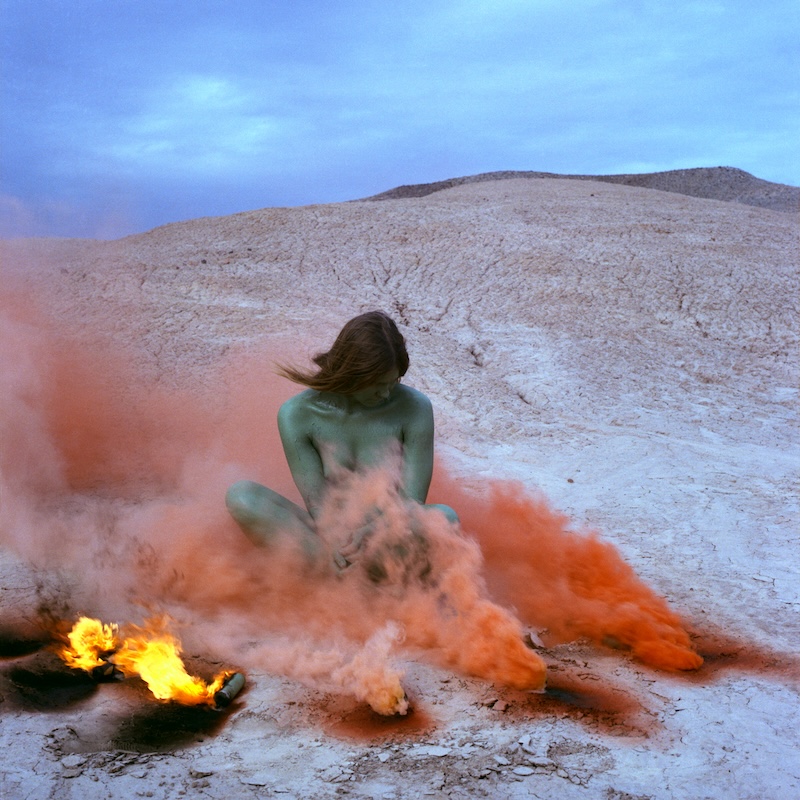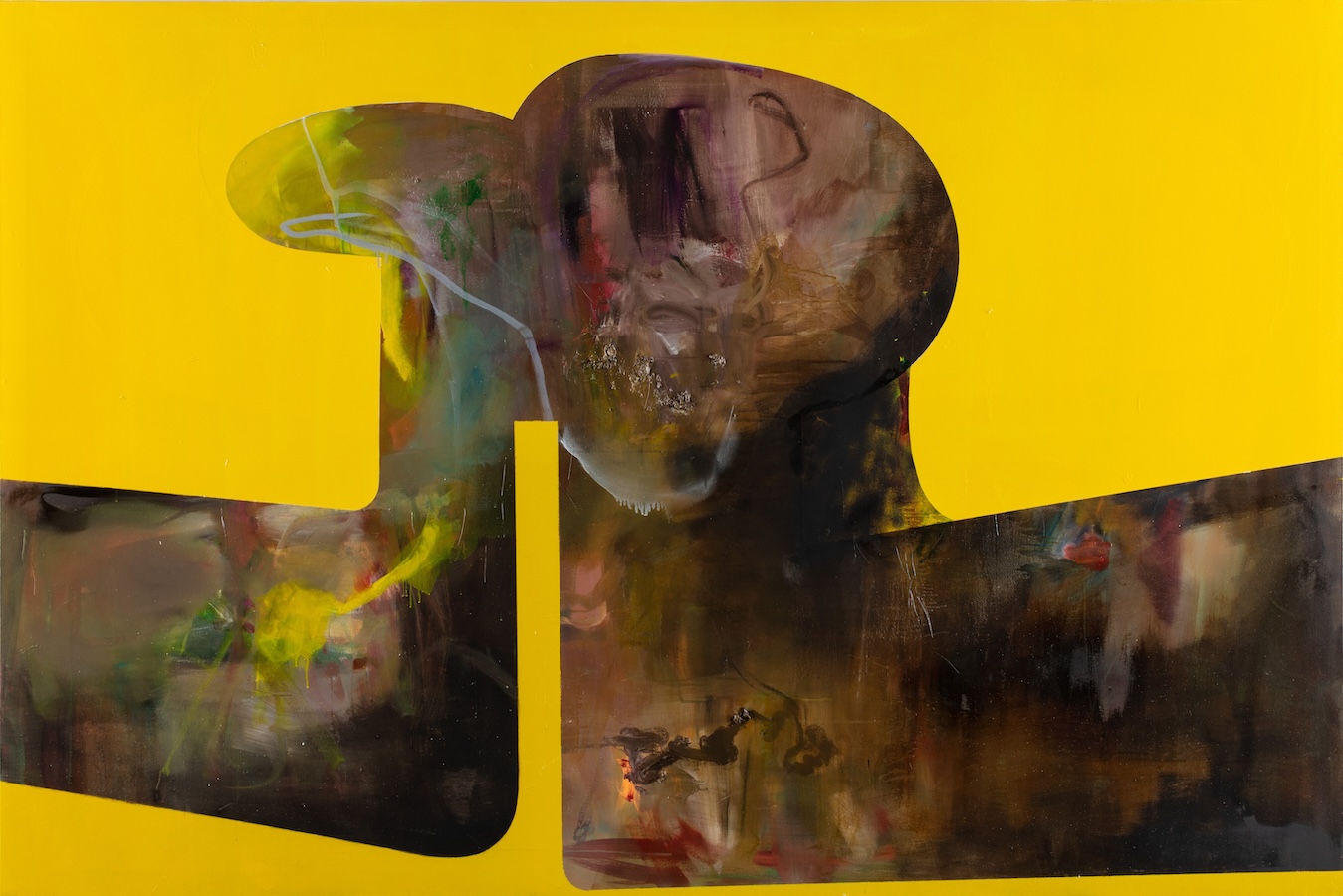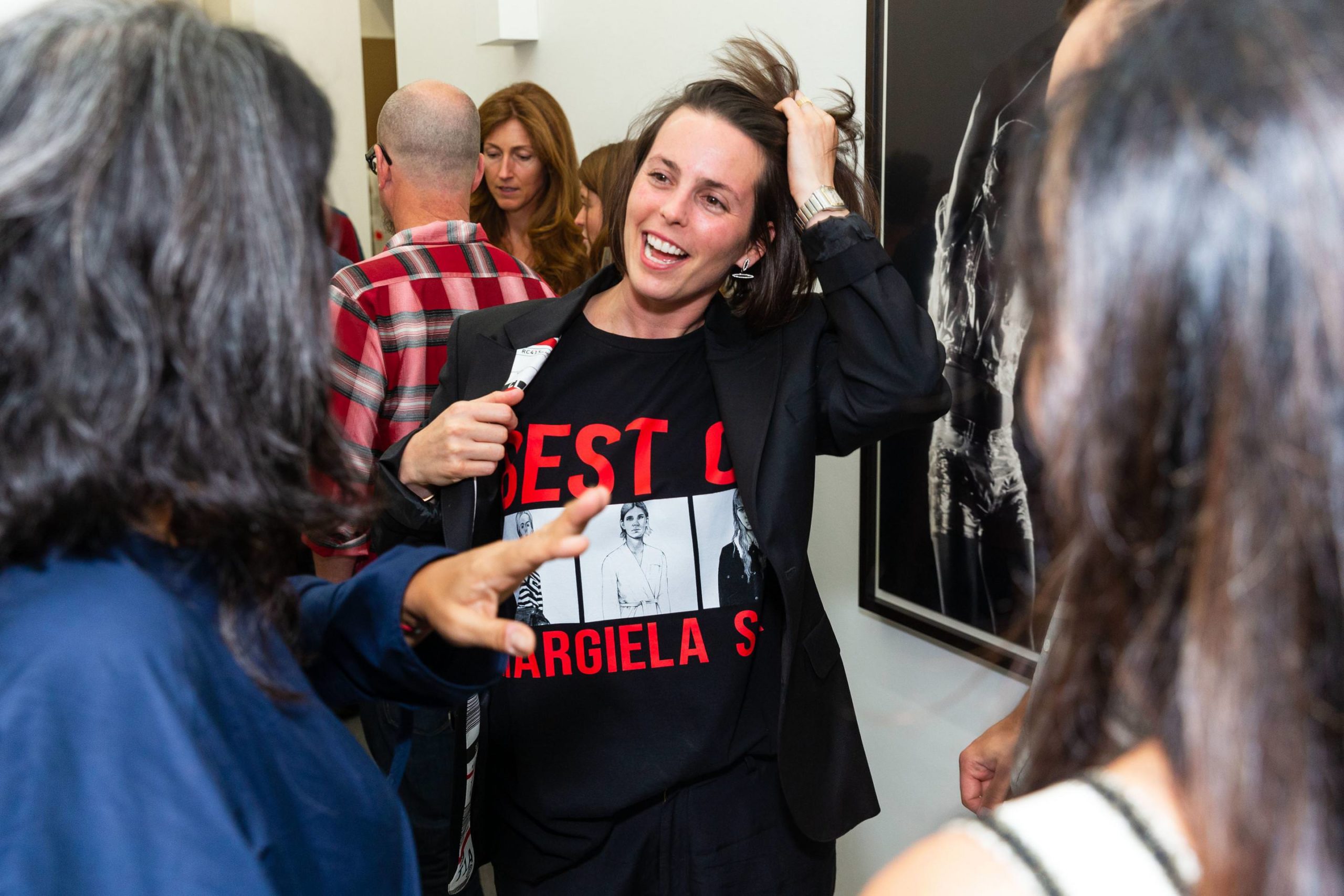Judy Chicago is celebrating this year with a bang. Literally.
It’s a big one for her, as she turned 80 in July with a big bash in Belen, New Mexico, where she lives and works. On July 20, a series of events—including a live “Fireworks” piece (that’s the bang)—celebrated her birthday, the opening of the Through the Flower Art Space, the reinvigorated Belen Arts District, and more.

Our Story with Evening and Morning Wallpaper
installed at Through the Flower Art Space, Belen, NM, 2019
Photo by Apolo Gomez
© Judy Chicago/Artists Rights Society (ARS), New York
Courtesy of the artist.
This fall, she has a solo show of new work at the National Museum of Women in the Arts, “The End: A Meditation on Death and Extinction,” on view September 19, 2019, to January 20, 2020. She also has a major solo exhibition at Jeffrey Deitch in Los Angeles (up through December), bringing together works from the sixties and seventies that have rarely been seen.
Whitewall spoke with the artist just before her birthday, to hear about how she found herself investigating mortality in new works while revisiting older pieces that haven’t been seen for over 50 years.
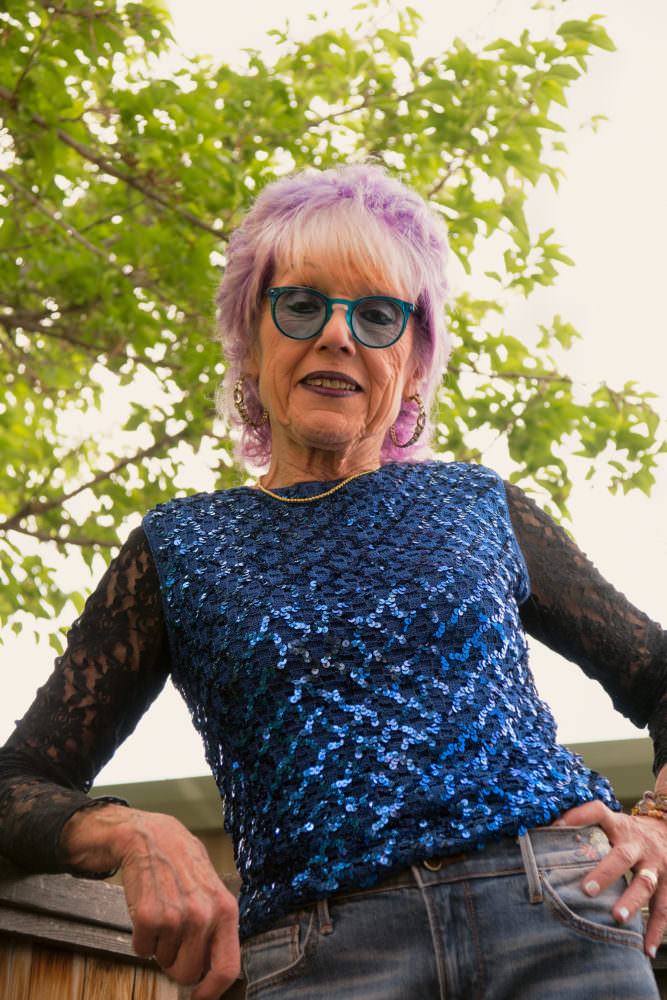
Judy Chicago
Photo by Donald Woodman.
WHITEWALL: This is a really big year for you! You’ve got lots going on, but I wanted to start with the exhibition at NMWA, “The End: A Meditation on Death and Extinction.” What made you want to make work around the topic of death?
JUDY CHICAGO: Well, it’s more an exploration of mortality. I’ve always been incredibly conscious of my mortality, since the time I was young. I had a lot of death in my family early on. In 2012 I had a really big health scare. I thought I was going to die, and I started thinking about it. Even though I’d been conscious of it before, I wanted to explore. Of course, in my career I’ve explored a lot of major subjects, like birth, so it seems inevitable that I would get to death.
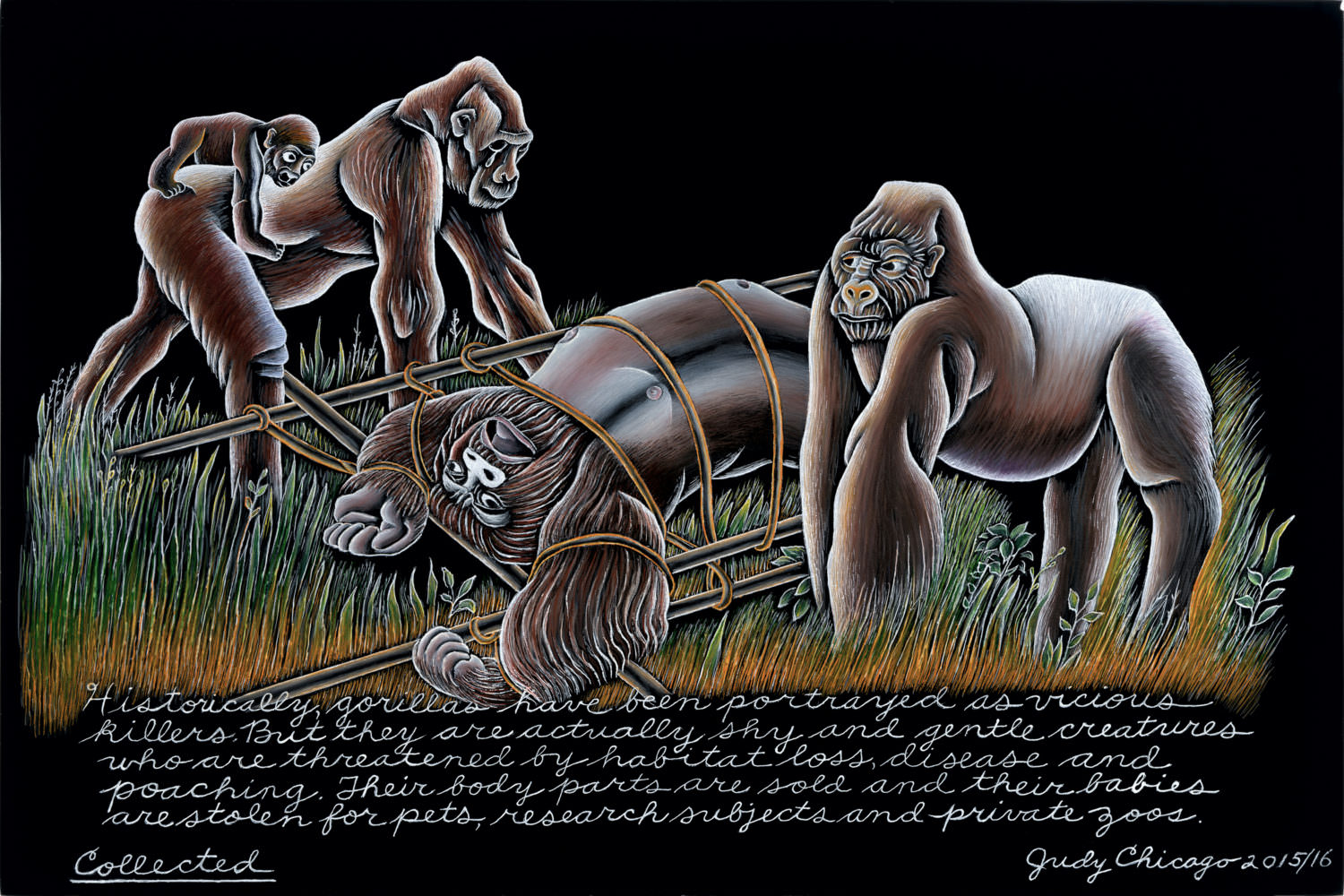
Judy Chicago
Collected, from The End: A Meditation on Death and Extinction
2015–16
Kiln-fired glass paint on black glass
12 x 18 in.
© Judy Chicago/Artists Rights Society (ARS), New York
Photo © Donald Woodman/ARS, NY
Courtesy of the artist, Salon 94, New York, and Jessica Silverman Gallery, San Francisco.
I started down a path that took me six years. I started reading and doing research about death. The way death is dealt with in our culture is not exactly healthy. There’s a huge amount of denial around it. It took me places that I hadn’t gone—not only my own death and mortality in general but the death of so many species that we’re seeing happening around us.
That was actually more difficult—the idea of extinction was more difficult than mortality.
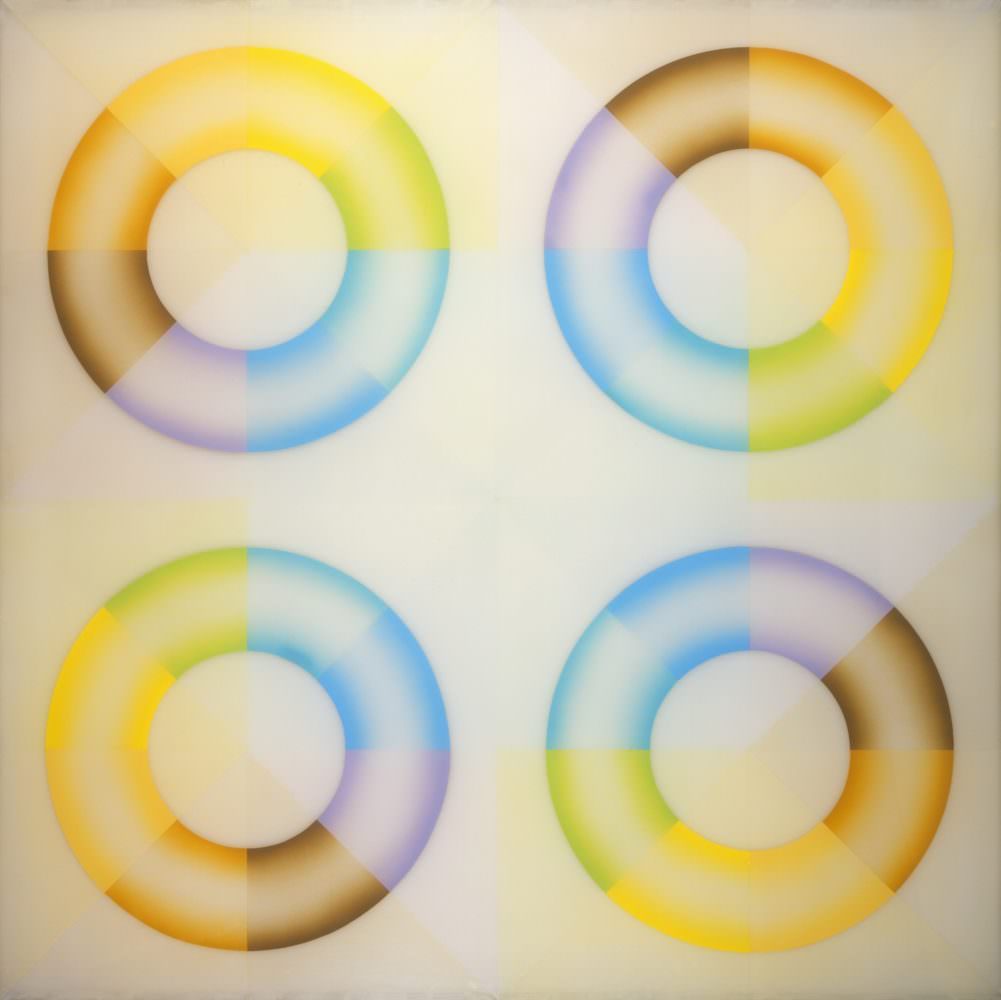
Judy Chicago
Pasadena Lifesavers #2 Yellow
Courtesy of the artist.
WW: Why do you think that was?
JC: It caused me deep grief to realize. I’ve been interested in our relationship with other species going back to “The Holocaust Project,” when we were doing research on human experimentation during the Holocaust and that kind of segued into animal experimentation. PETA helped me, gave me information, and I started really thinking about how we treat other creatures on the planet.
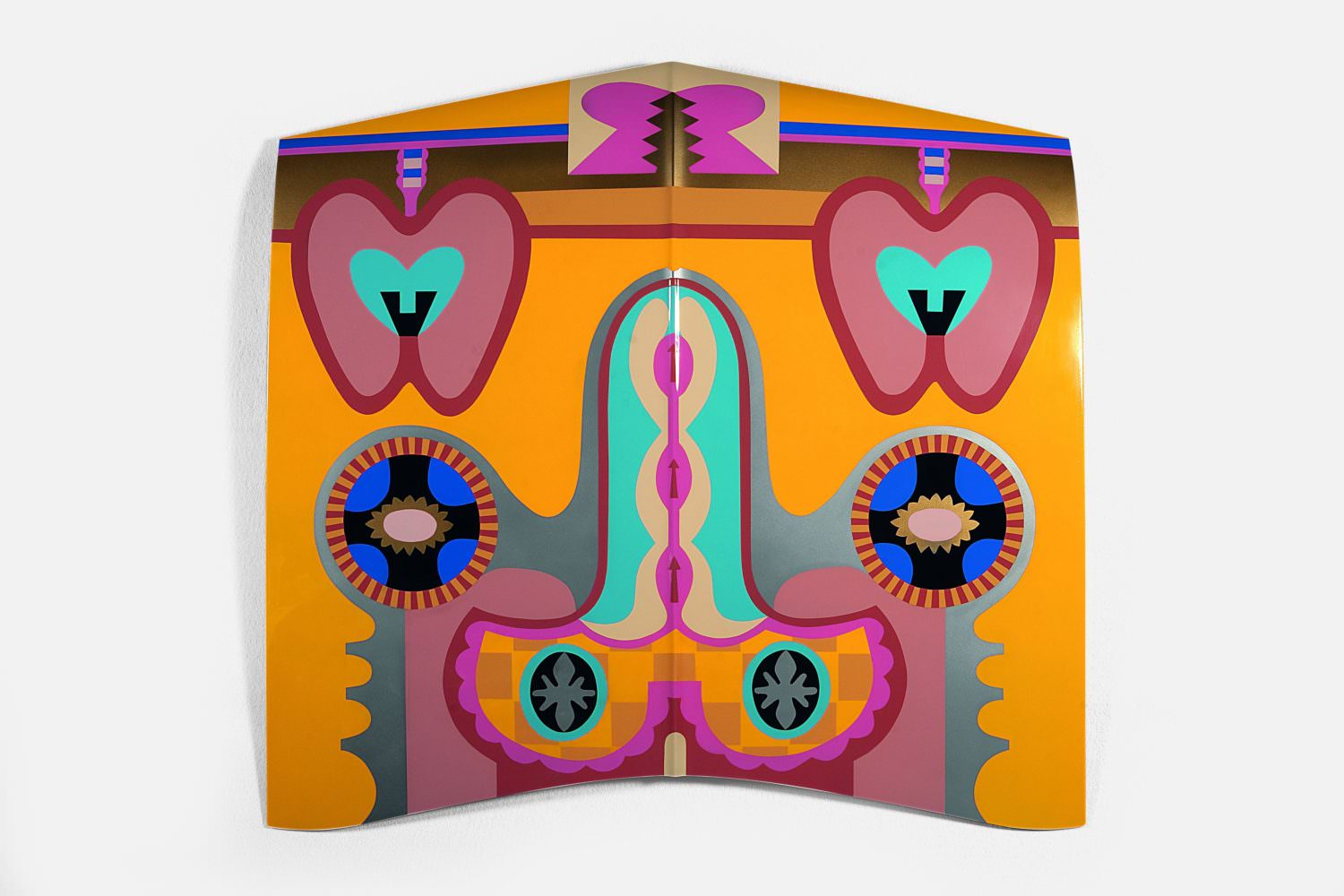
Judy Chicago
Bigamy Hood
Courtesy of the artist.
And then I did a series called “Kitty City: A Feline Book of Hours” that took me five years. That was an exploration of my husband’s and my relationship with our cat. It was playful, but underneath it was a much more serious investigation of the human–animal relationship and what I call “interspecies love.”
So it wasn’t surprising that from looking at the subject of death and human death, I would move into the potential death of our planet, other creatures, and ongoing extinction. For me, it was a natural path.
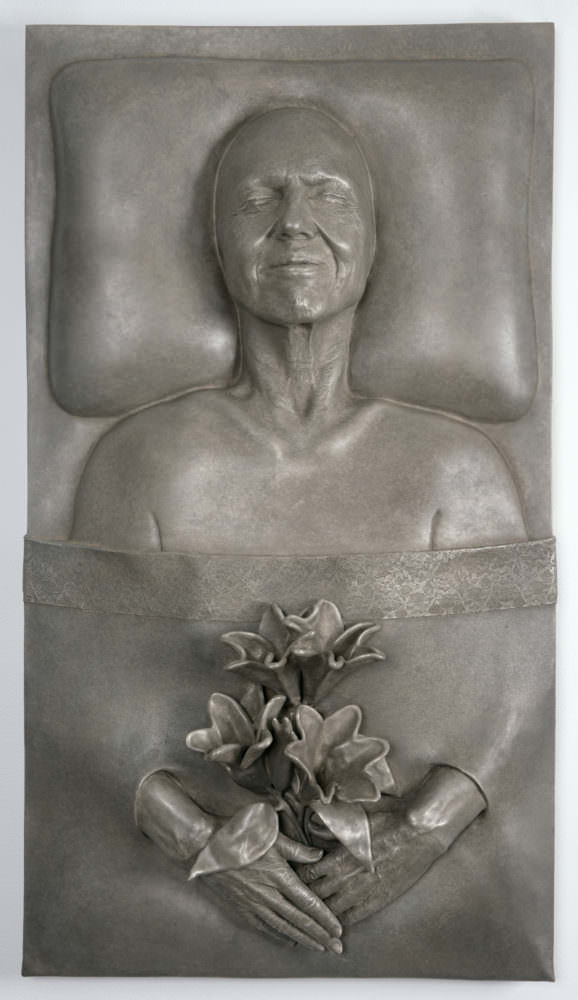
Judy Chicago
Mortality Relief, from The End: A Meditation on Death and Extinction
2018
Patinated bronze
36 x 20 x 7 1/2 in.
© Judy Chicago/Artists Rights Society (ARS), New York
Photo © Donald Woodman/ARS, NY
Courtesy of the artist, Salon 94, New York, and Jessica Silverman Gallery, San Francisco.
WW: Why did you want to portray the five stages of grief in porcelain for the series “Stages of Dying” that will be in the show?
JC: I had read Elisabeth Kübler-Ross a long time ago. I had done a series of glass pieces called the “Toby” series, which was the head of a woman who had been battling stage-four bladder cancer. So there are earlier forays.
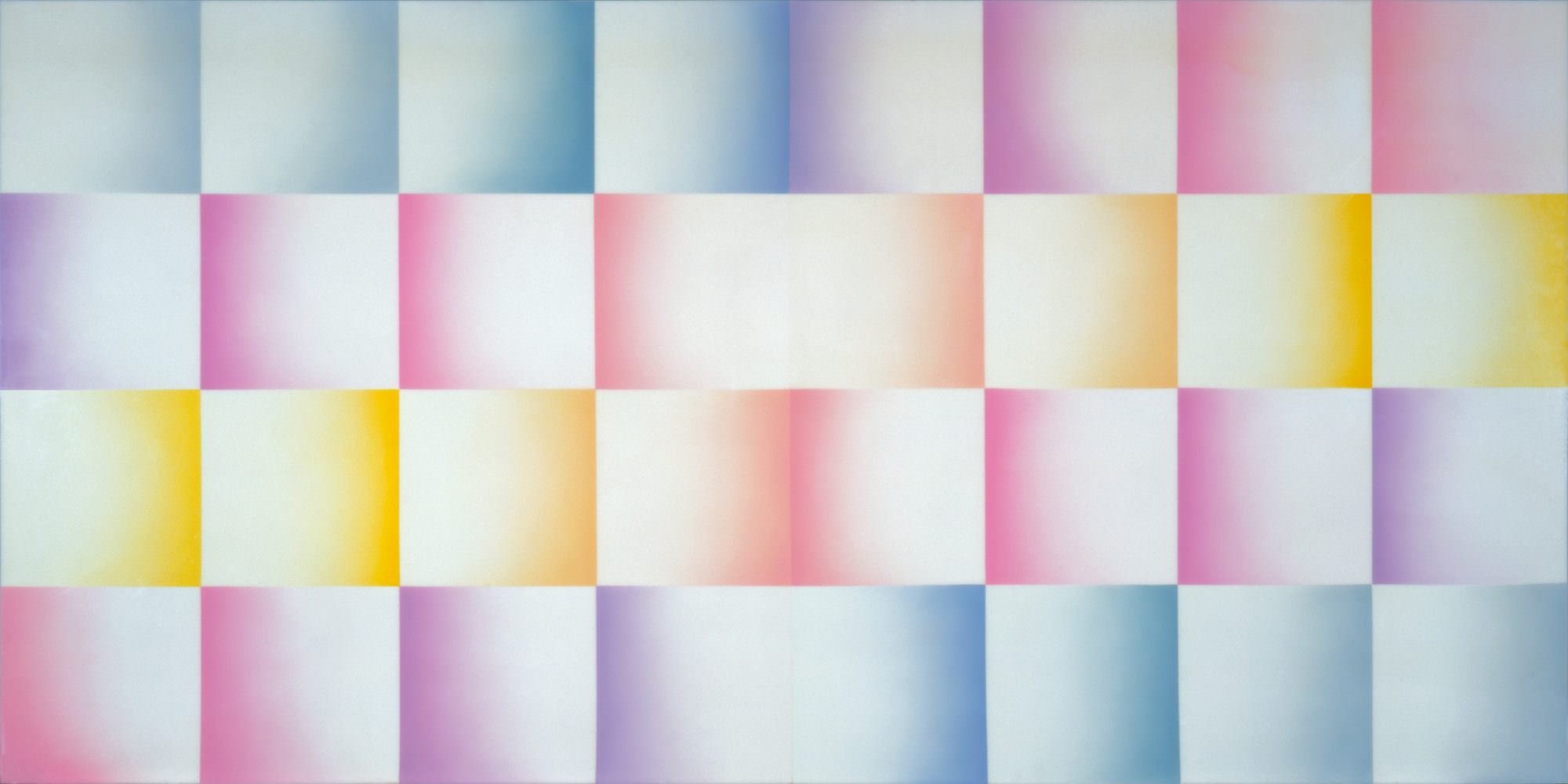
Judy Chicago
Flesh Fan
Courtesy of the artist.
I looked at the whole history of how we have dealt with death, what people have had to say about it. There is a whole body of literature including Kübler-Ross, who opened up the whole territory of what happens of when you die. Up until then, nobody ever talked about it scholarly or academically.
I knew I was going to deal with my own mortality, but I started with a series of porcelains based on her stages of dying. I thought that would be a good introduction to the subject of mortality.
WW: For the “Mortality” and “Extinction” series, why work on black glass?
JC: I’ve been working in glass since 2003. Glass, which is both strong and fragile, seemed like the perfect material to deal with the strength and fragility of the human body. We’re both strong and fragile. And black is the color of mourning, so, in a way, they are mourning pictures, which have a whole tradition in American folk art (those are needlework).
The significant issue in terms of the black glass is that the images on the subject of mortality are smaller than the images of extinction, because I felt like, in the face of what we’re doing to other creatures, one’s personal death seems quite small.
WW: Also this fall you’ll have a big show with Jeffrey Deitch in L.A. On view will be some early works and not as widely seen works. Can you tell us about that?
JC: That’s a huge show. Jeffrey’s L.A. gallery is a 12,000-square-foot gallery. It’s going to have my paintings, my sculptures, photos of my “Fireworks” pieces, and a new presentation on aluminum. I’m reimaganing the Feather Room, which was an installation that I did with two other artists in the 1960s.
It’s so exciting to me because we’re rebuilding some of the large-scale sculpture that I had to destroy because there was so little understanding of my work at that point. There was so much gender-based resistance to it. It will really be the first time that my whole first decade and a half of art practice will be seen together. It’s fabulous.
WW: How incredible to work on that while working on this most recent series.
JC: I have such a long career, and still so many aspects of my production are unknown. For the last five years, I’ve been traversing back and forth between all those decades in exhibitions and working on new work while working on shows that have helped people understand my earlier work. It’s been quite an adventure.
WW: What’s it like to go back in time like that?
JC: Because my artmaking life has always been more real to me than my “real life,” I can go back and forth because I remember it all.
When Jeffrey and I rebuilt this one piece, Zig Zag, that had never been shown, the only thing I had of Zig Zag was a black-and-white photo. And it’s very brightly colored. When I was working on the refabricating of it, I had to search my memory for the colors. When it was done I looked at it and thought, “My god, it looks exactly like it did in my studio in the 1960s.”
WW: Wow. What a full-circle moment.
JC: I know. Especially since I started out in L.A. Jeffrey’s gallery was designed by Frank Gehry. Frank Gehry was my first landlord in Santa Monica. His sister married my first gallerist. So I keep saying, from the beginning to the end, that’s what this fall is going to be.
And on top of which I’m celebrating my 80th birthday with a bang!
WW: Right! How are you celebrating?
JC: We’re having what we call “The Birthday Bash.” We’re opening the Through the Flower Art Space, which will hopefully be the anchor for the development for the Becker Avenue Arts and Culture District, which will help economic development in our town [of Belen, New Mexico], which is badly needed. There are going to be exhibitions up and down the street, people will come from all over the country, and I’m doing a big “Fireworks” piece in the street.
So I’m celebrating my birthday with a bang.
WW: Literally! Tell us about the reopening of the Through the Flower Art Space—an exhibition space and resource and research center for ensuring that women’s achievements become a part of our cultural heritage and history—and how you’re hoping to see this next phase?
JC: When Donald and I first moved to Belen, New Mexico, 23 years ago, we moved Through the Flower, which started in California in 1978. We started doing exhibitions and public programming. But after Pacific Standard Time happened in L.A., my career really started to explode and we got really, really busy. We started making institutional partnerships, with Penn State, NMWA, and Harvard, to get help from these institutions. Between working with our partners and my career, we got too busy. So we closed the space down.
In the fall of last year, the city came to us and asked us if we would consider reopening Through the Flower in partnership with the city in order to help them develop the Becker Avenue Arts and Culture district.
We felt like we wanted to be good citizens in our town, so we agreed. Which prompted what I call, “the Belen brouhaha.” There had been all these evangelical churches that mounted a campaign to stop the partnership with the city.
Then there was this incredible outpouring of support from our community. The mayor donated his annual salary. The wine bar across the street offered to develop two Judy Chicago wines that would help fund the art space. They all got together and organized this incredible fundraiser. I thought it was such a fabulous example of what art can help do. And they raised enough money for us to renovate the space and Donald did an incredible design for the space, which we’re about to open. It was just so heartening and touching. It’s been incredible in terms of how art can bring people together.
WW: To have your community really rally around you . . .
JC: It’s fabulous. Especially a small New Mexican semirural community of seven thousand people. It’s moving. One of the things it’s allowing us to do, which I feel really good about, is to try and demonstrate the different relationship between art and community as an alternative to the market-driven art world.
That’s always been important to me—to try and demonstrate alternative paths, alternative ways of making art, alternative ways of thinking about art, and teaching art, and alternative ways for art to relate to the community in which it resides.





